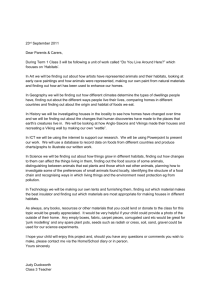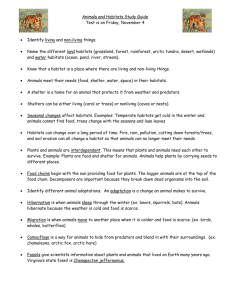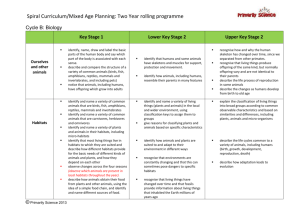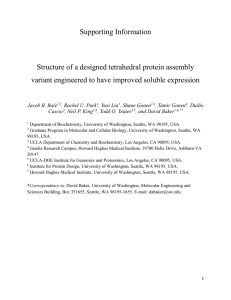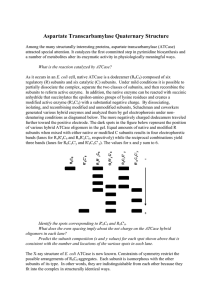Sequencing Rationale - IHMC Public Cmaps (3)
advertisement
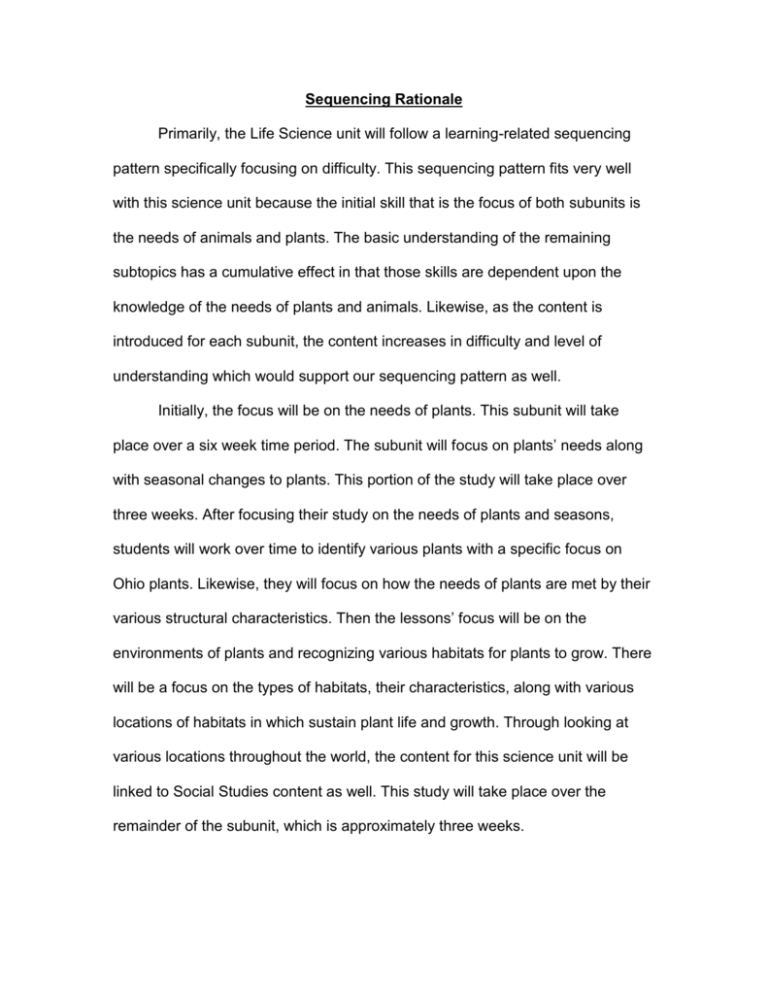
Sequencing Rationale Primarily, the Life Science unit will follow a learning-related sequencing pattern specifically focusing on difficulty. This sequencing pattern fits very well with this science unit because the initial skill that is the focus of both subunits is the needs of animals and plants. The basic understanding of the remaining subtopics has a cumulative effect in that those skills are dependent upon the knowledge of the needs of plants and animals. Likewise, as the content is introduced for each subunit, the content increases in difficulty and level of understanding which would support our sequencing pattern as well. Initially, the focus will be on the needs of plants. This subunit will take place over a six week time period. The subunit will focus on plants’ needs along with seasonal changes to plants. This portion of the study will take place over three weeks. After focusing their study on the needs of plants and seasons, students will work over time to identify various plants with a specific focus on Ohio plants. Likewise, they will focus on how the needs of plants are met by their various structural characteristics. Then the lessons’ focus will be on the environments of plants and recognizing various habitats for plants to grow. There will be a focus on the types of habitats, their characteristics, along with various locations of habitats in which sustain plant life and growth. Through looking at various locations throughout the world, the content for this science unit will be linked to Social Studies content as well. This study will take place over the remainder of the subunit, which is approximately three weeks. Next, the focus will shift to the needs of animals including people. This study will take place in approximately a week with discussion of basic needs embedded in the future subunits or subtopics as well. Then the discussion will move to the structure of animals and how their body structure helps meet their needs. At the same time, students will be working on identifying different types of animals including people and specifically focusing on Ohio animals. The study of structure and the identification of various animals including Ohio animals will take place in a two-week period. Lastly, the subtopic of environment and habitats will be an area of study. Students will investigate various animal habitats, their types, characteristics, and locations throughout a three-week time frame. As previously stated in the plants subunit, there will be a link to the Social Studies content including continents and oceans. As well, there will be a one to two week study of food chains. The subunit will include the definition of food chains and the ways they are formed. Likewise, instruction will also focus on the importance of food chains and the cause and effect relationships that are involved with them. Lastly, there will be a one-week investigation of the similarities and differences between plants and animals. It will be important to focus on the similarities and differences of needs, structure, habitats, and food chains. Also, instruction should compare and contrast the importance of each of these components of life science upon each other and other organisms in each of the subunits. Conclusively, the Life Science unit will take place over approximately a fifteen week time period. The sequencing pattern is a learning-related pattern with attention specifically paid to the level of difficulty in the content of the unit. The unit certainly increases in difficulty by investigating the various needs of plants and animals to the comparison of the similarities and differences between the structures, habitats, and food chains involving plants and animals. With the study of Life Science and its various subunits, there will be numerous opportunities for scientific thinking, application, and extension of the focus skills.


